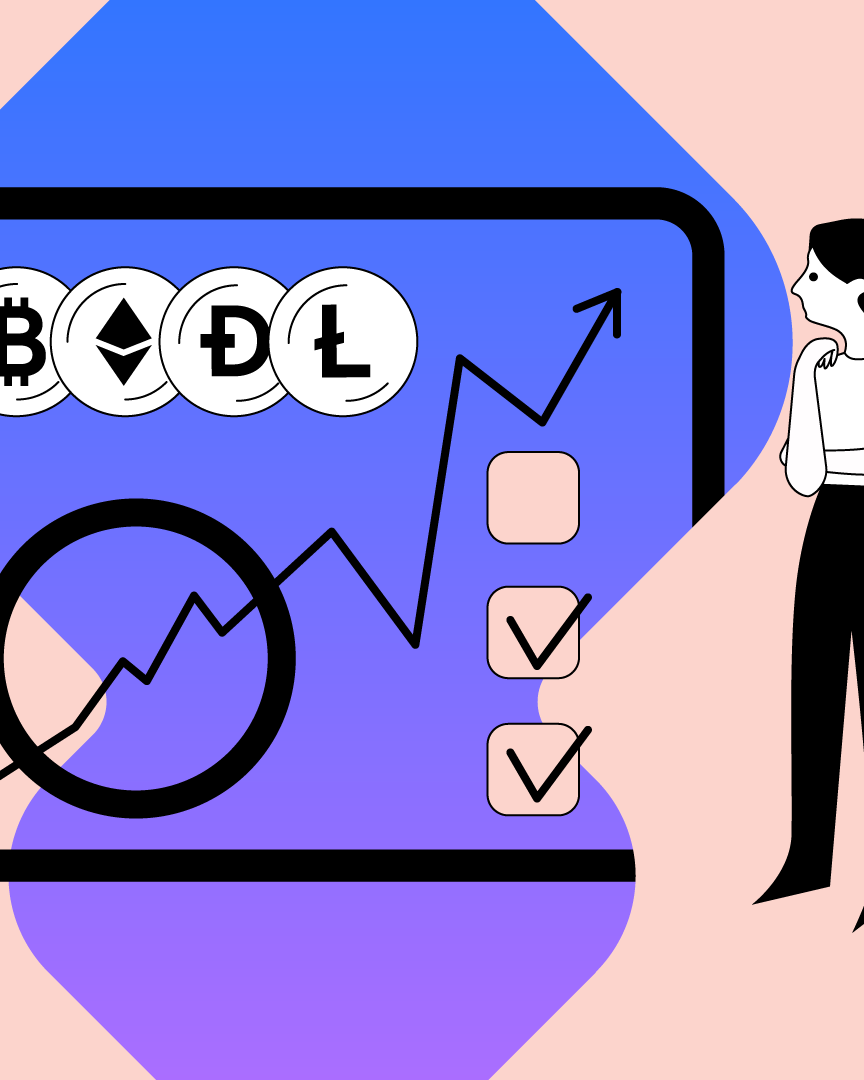3.01 What is fundamental analysis in crypto?
This lesson walks you through the fundamental analysis of cryptocurrencies.

Trading volatile assets like cryptocurrencies require you to analyze the market thoroughly. You can evaluate your investments in crypto with three types of analyses - fundamental analysis, technical analysis, and sentiment analysis. Over this course, we drive our focus towards technical analysis, but, we must always remember that one of the best practices for a solid investment decision is to combine several analyses.
Unlike technical analysis, fundamental analysis deals with the study of causes, not effects. In one of our lessons on investments in cryptocurrencies, we took you through the basics of fundamental and technical analysis for digital assets. In this lesson, we take a deeper dive into fundamental analysis and how to perform it for cryptocurrencies.
This lesson walks you through the fundamental analysis of cryptocurrencies.
Contents
- What is fundamental analysis?
- How to perform the fundamental analysis?
What is fundamental analysis?
It is important to keep in mind that the majority of cryptocurrencies are projects and not companies like in the case of the stock market. Conducting a proper fundamental analysis by considering all the available information about the project will help you determine whether that cryptocurrency has value or not.
Fundamental analysis focuses on evaluating the “intrinsic value” of an asset. By considering various internal and external factors, you can evaluate whether a cryptocurrency is overvalued or undervalued.
How to perform the fundamental analysis?
While determining the value of an item, you need to take many factors into account such as the current and future macroeconomic situation of the region and the country, industry development opportunities, profit and dividend forecast, and cash flow of the given company behind the item.
It is worth considering that the fundamental evaluations are based on the subjective assumptions of the authors and therefore you cannot treat the results as 100% accurate. Despite that, it is still the most effective analysis and its evaluations are often the only guidelines for you when it isn’t possible to apply other analyses. Let’s look at the three main types of metrics that will help you to perform fundamental analysis of a cryptocurrency.
Project metrics
Evaluating project metrics is a qualitative approach to determine the performance of a cryptocurrency project. Here we focus on various factors like the purpose of the cryptocurrency and how the project operates.
- Background analysis - The team behind the project, their track record will reveal if they are qualified or experienced enough to bring a promising project. You can also consider the early partners and advisors of the project to assess credibility.
- Whitepaper - We highly recommend you to go through the whitepaper of any crypto project to get an overview. This technical document contains information like the technology used, use-cases of the cryptocurrency, planned features and upgrades, supply and distribution scheme, etc. It is also important to consider third-party opinions and reviews to cross-reference the information.
- Tokenomics and utility - Tokenomics help you understand the token supply and demand which are important in deriving the value of a cryptocurrency. If a token has more demand compared to its supply, the price will be higher. A unique purpose behind the project and real-world use-cases of a token will attract more users.
- Project road map - Most crypto projects will have roadmaps to show the timeline for test nets, releases, and new features. The roadmap tells you a clear outline of future developments and measures the achievement of milestones.
- Competitors - Researching the market competitors helps you in identifying the landscape in which the project needs to compete. Having an idea of the overall ecosystem is important to evaluate the potential of the project.
Financial metrics
While project metrics involve a qualitative approach, financial metrics evaluation is more like a quantitative approach.
- Market capitalization - Market capitalization of a token is calculated by multiplying the circulating supply and the current price of each token. If you only consider the market cap value of a project, it can be misleading. However, it can still be used to figure out the network’s growth potential.
- Liquidity and trading volume - Liquidity tells you how easily you can buy or sell an asset while the trading volume helps you determine the liquidity. A highly liquid market will have tight bid-ask spreads and you can easily sell the asset at the trading price.
- Circulating supply - Circulating supply is the total number of coins or tokens that are active and accessible to public supply. It differs from the total supply of tokens and constantly changes over time.
Blockchain metrics (On-chain metrics)
The Blockchain network is a valuable resource that helps in evaluating the project by observing the data. But, doing this manually requires a lot of time and resources. A simple solution is to leverage websites that provide this data for various crypto projects.
- Hash rate - Hash rate is a combined computational power used in mining platform calculations on a proof-of-work consensus mechanism. It is considered as proof of the cryptocurrency’s health by investors. If the hash rate is higher, then miners would get more incentives to mine and the network will be more secure.
- Active addresses - It is the number of active blockchain addresses in a given period. You can add the total sending and receiving addresses of each transaction in a given period or you can also examine the number of unique addresses.
- Transaction value and fees - A consistent high transaction value implies that the currency is in steady circulation. On the other hand, fees reflect the demand on the blockchain. If you want to make a faster transaction, you would have to pay high transaction fees.
Performing a professional fundamental analysis of a cryptocurrency requires a lot of time and patience. Among others, the current situation of the company is also important. This is why most of the investors use studies prepared by brokerage houses, exchanges, and investment banks.
We believe that you are in a better position to do fundamental analysis on your own for a cryptocurrency project with the help of this article. Now, it's time to take a step further and dive deep into technical analysis in the upcoming lessons.
FR
This material does not constitute investment advice, nor is it an offer or solicitation to purchase any cryptocurrency assets.
This material is for general informational and educational purposes only and, to that extent, makes no warranty as to, nor should it be construed as such, regarding the reliability, accuracy, completeness or correctness of the materials or opinions contained herein.
Certain statements in this educational material may relate to future expectations that are based on our current views and assumptions and involve uncertainties that could cause actual results, performance or events to differ from those statements.
BB Trade Estonia OU and its representatives and those working directly or indirectly with BB Trade Estonia OU do not accept any liability arising from this article.
Please note that investing in cryptocurrency assets carries risks in addition to the opportunities described above.




















